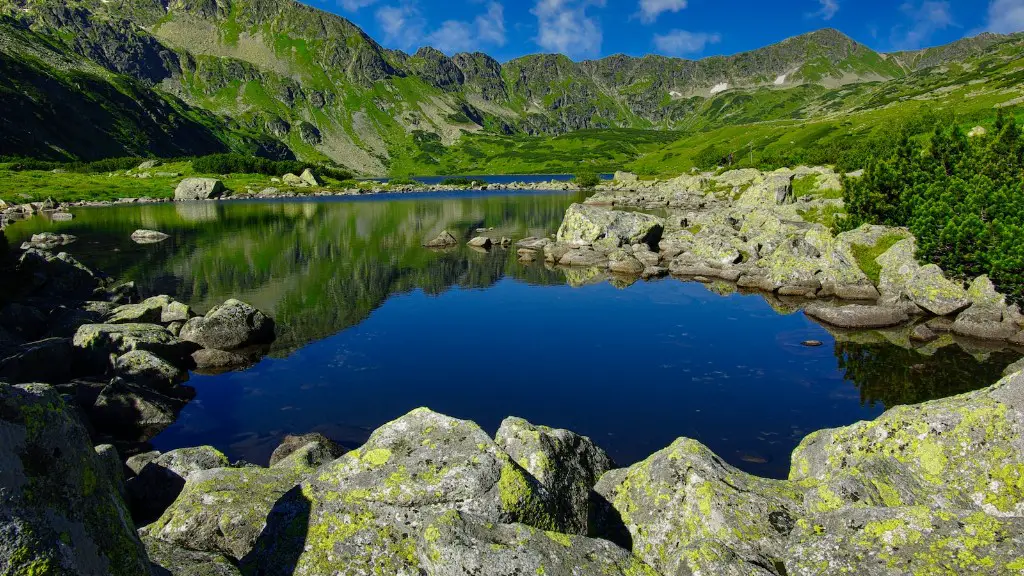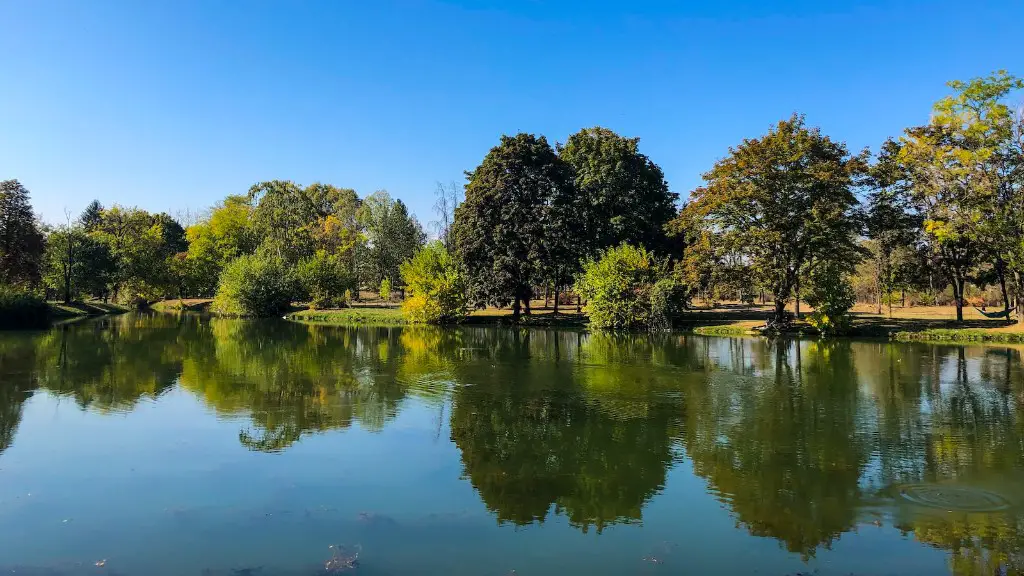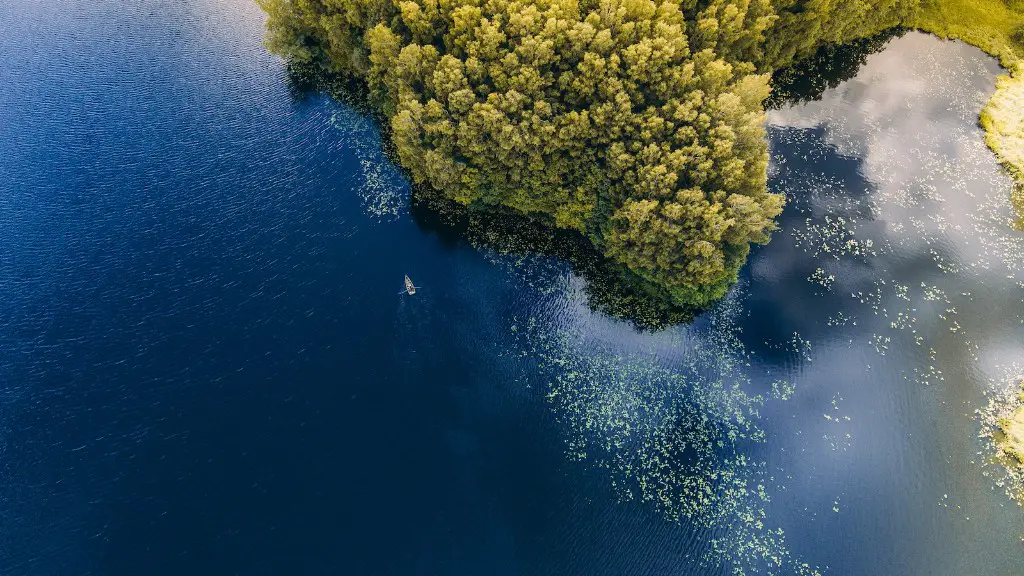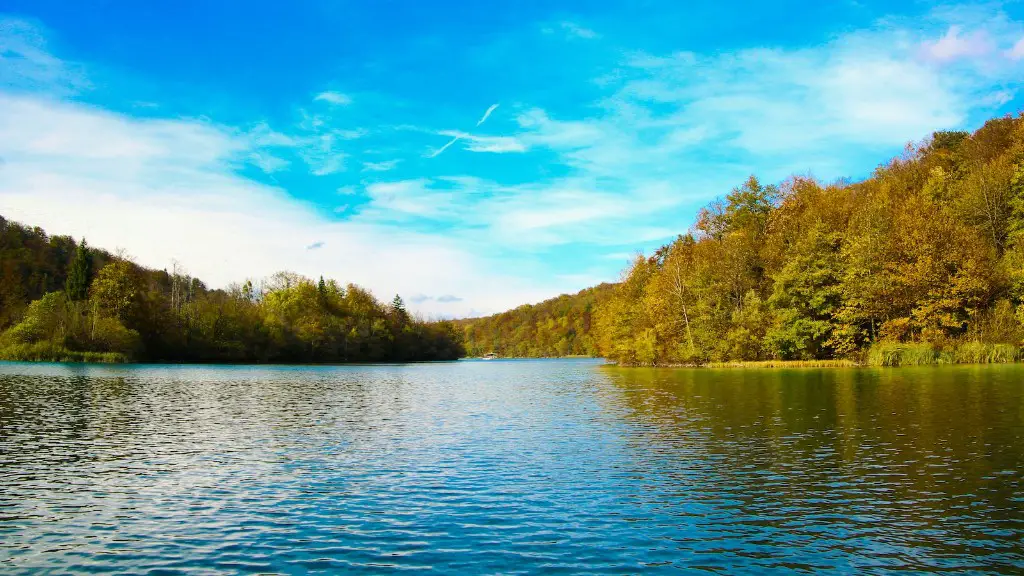Lake Superior is the largest freshwater lake in North America and the third largest in the world. It’s part of the great lakes and borders both the United States and Canada. Despite Lake Superior’s large size, there is still a lot of mystery surrounding what lies beneath it — including a question of just how much water is contained within the lake itself.
Researchers believe that it is impossible to accurately measure the total amount of water contained within the lake. This is because of the lake’s complexity and its ever-changing nature. However, studies have been conducted to try to give an estimated idea of the total amount.
The studies have found that Lake Superior contains approximately 2,900 cubic miles of water. That’s about twice as much water as all of the other Great Lakes combined. While it may seem like a lot of water, it’s actually a very small amount when compared to the total volume of the Earth.
Lake Superior is a vital source of water for the area. Its waters contributes to the economies of the states and provinces that border it, and is an important part of the ecosystem. Its size makes it an ideal habitat for a variety of fish and other wildlife. It’s also home to several species of endangered and threatened species, including the sturgeon and the piping plover.
The Lake also has a big impact on the climate in the region. Its deep waters help to moderate temperatures, meaning that during the winter months it may be slightly warmer than the surrounding areas. The cold deep waters also act as a sink for carbon dioxide, thus helping to improve air quality.
The amount of water in Lake Superior is always changing. The lake receives a large amount of water from precipitation, but it also loses some of its water to evaporation. This is why it’s important for the ecosystems and people in the area to use the lake’s water responsibly and conserve as much as possible.
In addition to the amount of water that is in the lake, a lot of answers around other questions such as the types of organisms inhabiting the lake and the water’s chemical makeup are still unknown. This is why researchers are still conducting studies to better understand the lake and all of its complexities.
The Impact Of Climate Change On Lake Superior
Climate change is a major global issue, and it is having a direct impact on Lake Superior. A warming climate is leading to a decrease in the lake’s ice cover. This, in turn, is leading to a decrease in the lake’s temperature, which affects the ecosystems and species that rely on the lake for survival. As the lake warms, it holds less oxygen and bacteria grows more quickly, leading to water quality issues.
Climate change is also causing lake levels to drop. As the lake loses water to evaporation, the amount of water it holds is decreasing. This is leading to a decrease in the lake’s depth, affecting its ability to support the fish and other wildlife that live there. It’s also causing problems for the people living in the area, as lower lake levels can lead to a decrease in drinking water availability.
Climate change is also impacting the lake in other ways, including increasing the intensity of storms and leading to increased shoreline erosion. These effects have a direct impact on the people and ecosystems in the area and should not be taken lightly.
Lake Superior’s Importance To The Region
Lake Superior provides many benefits to the people, wildlife and environment in the area. Its waters are a source of drinking water for the states and provinces that border it and are used to generate hydropower. It is also a major source of recreation and tourism in the area, as people come to take advantage of the lake’s beauty and outdoor activities.
The lake is also an important part of the Great Lakes ecosystem, and its waters play an important role in the overall health of the lake and its inhabitants. As a result, it is important to protect and preserve the lake so that future generations can continue to enjoy its wonders.
Conservation Efforts To Protect Lake Superior
There are a number of conservation efforts underway to protect and preserve the lake. One of the most important is that of the Great Lakes Restoration Initiative (GLRI). This is a federal program that provides funding for projects and research aimed at restoring the health of the Great Lakes ecosystem.
The GLRI has funded a number of projects aimed at restoring the lake’s habitat and improving the lake’s water quality. This includes restoring wetlands, improving shoreline habitat, and reducing pollutants such as phosphorus and sediment. The GLRI has also helped to fund research into the lake’s changing climate.
In addition to the GLRI, there are a number of other conservation efforts taking place in the area. Local governments have enacted laws and regulations aimed at limiting the amount of pollution that enters the lake, and businesses and individuals are encouraged to reduce their water use and practice responsible freshwater management.
Conclusion
The amount of water contained in Lake Superior is an interesting and complex question. It’s a difficult one to answer due to the complexity of the lake and its ever-changing nature. But, researchers have been able to give an estimated amount and have found that the lake contains approximately 2,900 cubic miles of water.
The lake is an important part of the Great Lakes ecosystem and is a vital source of water for the area. It provides many benefits to the people, wildlife and environment in the area, which is why it is important to protect and preserve the lake. Fortunately, there are a number of conservation efforts taking place to allow us to do this.




